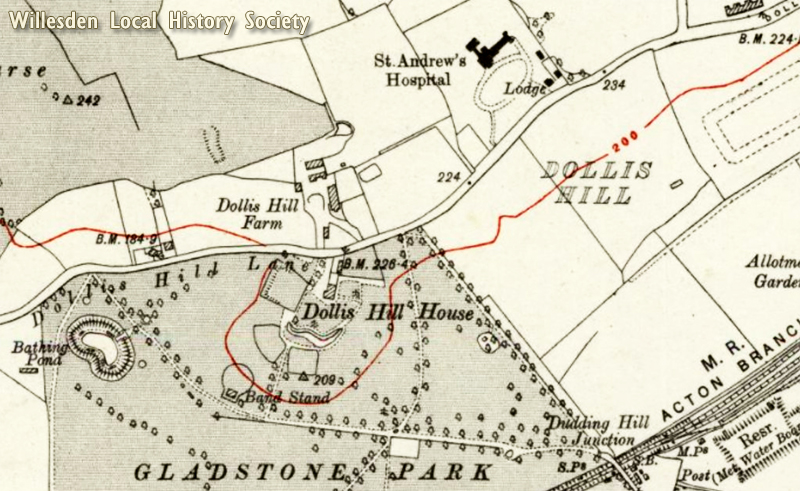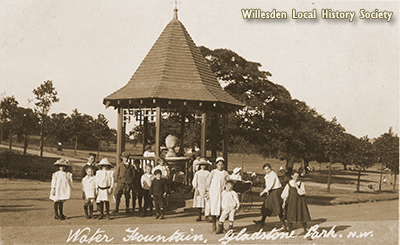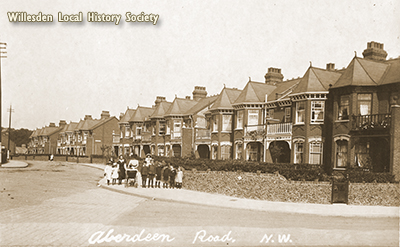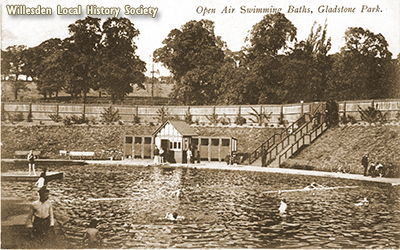
Dollis Hill
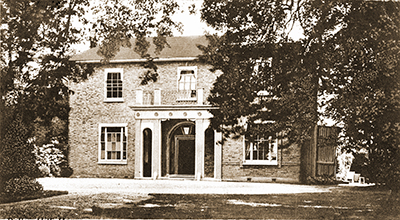
History of Dollis Hill
The area of Dollis Hill lies between Neasden, Cricklewood and Willesden. The peak of the hill sits at the north, and Gladstone Park takes centre stage, sloping down to the park’s southern edge.
The name comes from a family called Dolley or Dawley. There is some evidence of Iron Age inhabitation, but most of the area was arable farmland until the 19th century. It is thought that the origin of the nearby Dollis Brook is in fact different, but the spellings have managed to converge over time.
Dollis Hill House was constructed in 1825, and was initially the home of the Finch family. It was later taken over by Lord Tweedmouth, a senior Liberal Party member. His daughter married Lord Aberdeen, and the couple took over the residence in 1881. Their visitors included the prime minister William Gladstone and the writer Mark Twain. In the early 20th century the council in Willesden purchased the grounds and later the house. The park was created and named after Gladstone. From the highest points there are wide-reaching views over London.
The house itself was turned into a restaurant and served as a hospital during WWI. It later fell into disrepair and was badly damaged by fire in 1996. It was finally demolished in 2012, although low brick walls, part of the original structure, remain to show the layout of the house.
St Andrew’s Hospital was situated at the crest of the hill on Dollis Hill Lane, just to the north-east of Dollis Hill House. Its construction and maintenance were funded by a Frenchwoman named Marguerite Amice Piou, who wished to remain anonymous until she died. The hospital, of red brick and Portland stone, was designed by Robert Curtis. There were four storeys topped with a green dome, and the building included an operating theatre, kitchens, a chapel, accommodation for the staff and 100 hospital beds. The total length of the façade was around 100 metres.
The French benefactress stipulated that the hospital was to be under the care of a religious order, and a certain number of beds were to be reserved for French speaking patients. It opened in 1912 and used as a military hospital from 1914.
The hospital closed in 1973 and has since been demolished. The tall iron posts containing small letterboxes to receive donations still survive. The site has been replaced with houses and a large water reservoir.
Dollis Hill Farm is said to have been the last working farm within a five mile radius of Marble Arch. Its existence dates back to the 15th century, although its name, acreage and buildings changed over the centuries. The well used to provide water to Dollis Hill House as well as the farm itself. Oliver Cromwell apparently once visited the farm. It operated as a dairy farm in its last years, before being converted to a veterinary hospital in the mid 1920s. The site was finally cleared in 1939.
The Post Office Research Station moved to Dollis Hill in 1921 and initially operated from ex-army huts. New premises, an enormous building on the very top of Dollis Hill, was opened in 1933 by prime minister Ramsay MacDonald.
A secret bunker was created underground on the site in 1939 and was twice used by Winston Churchill during WW2. Nicknamed “Paddock”, it still exists and is occasionally open to visitors.
The PO Research Station moved to Suffolk in the 1970s, and the building was converted to luxury flats. The access road was named Flowers Close, after the engineer Tommy Flowers who had worked at the research station. There he built the world’s first programmable computer, named Colossus, which was subsequently used at Bletchley to decode German messages during WWII.
Most of the housing in Dollis Hill was built before and after WWI. There was a significant Jewish community who had moved from East London. The Dollis Hill Synagogue opened in 1938 and since 1995 has operated as a Jewish primary school.
Hester Coley, April 2021
